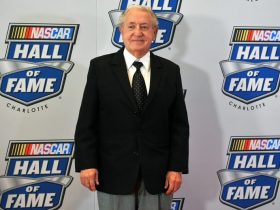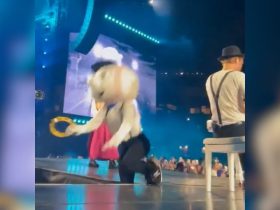Tom Brady used to put on his Little League uniform at 7 a.m. in preparation for a Saturday game hours later. He routinely went to hit and field with his dad at a park near his home in San Mateo, California. On the drive home, the good vibes from both activities flowed through him.
Drew Brees felt baseball was his calling. He switch-hit and wore No. 9 when he got to the NFL in honor of Ted Williams.
Before he became ‘Coach Prime,’ Deion Sanders was pinned with the nickname of “Prime Time” for his proficiency at basketball (and at dunking a basketball).
Bo Jackson, like Sanders, played for NFL and Major League Baseball teams. His first love, though, was track and field.
You might know these stories but how about the one about Sophia Vitas? She was a strong high school basketball player who was recruited by smaller schools but instead walked on as a rower at the University of Wisconsin. This summer, she will represent the United States as a member of the women’s rowing team at the Olympic Games in Paris.
“I think I’m close to reaching my peak now, especially coming into the Olympic year,” Vitas, 30, tells USA TODAY Sports. “But I feel like each year I’m outperforming my last.”
Vitas, like the other world class athletes mentioned above, played multiple sports in her youth and through high school. At one point as a high schooler, in fact, she was playing four (soccer, basketball, track and cross country). More fundamental to those of us whose kids are playing youth and high school sports at the moment, however, is her love for all of them. She didn’t know which one she wanted to pursue seriously until she was much older.
None of these athletes did, and you could argue Sanders and Jackson never really picked one. It’s a crucial lesson for all sports parents, whether your kids wind up “making it” or not. In fact, how you define “making it” is an important matter as well.
We live in an era where we throw our kids onto travel teams at age 8 or earlier. (I was guilty of that one.) We decide they must specialize at a sport, sometimes at the urging of coaches. If they don’t specialize, these coaches warn us, they will fall behind the others.
Can kids still be multisport stars in this era of specialization? I think they can. But here is a more critical question to ask yourself: What’s your goal?
Depending on your child’s age, maybe you shouldn’t have one yet. Maybe he or she should just be playing sports, as we are as adults, for the mental and physical health benefits, or for simply the fun. There will be a time to specialize later. But that time is unique for each athlete.
As we transition from fall to winter sports, here are five recommendations to help you find the right moment for your child to specialize (if he or she specializes at all):
1. When your kids are young, forget the scholarship. Just get out and play.
My 13-year-old son (the one whom I signed up for travel baseball at 7) thankfully still loves that sport and also plays on a basketball team. But almost every day after school, he and his friends ride bikes or scooters or play touch football or pickup basketball. This aspect of his sporting life feels more like the way childhood sports used to go.
“I grew up and played a lot of sports, but it was a neighborhood softball league, a neighborhood soccer league, those types of things that you could ride your bike to that weren’t hour-long drives to 3-to-4 hour practices,” says Tamara Valovich McLeod, a research scientist at the Athletic Training Practice-Based Research Network based in Arizona.
Valovich made the comments at a webinar last month hosted by the National Athletic Trainers’ Association (NATA) entitled, ‘Variety is the Spice of Sport.’ A theme that emerged from it was how the art of neighborhood play has been lost within a youth sports machine that drives kids toward specializing early.
It make us feel good when our child is invited to play on a youth travel team. This feeling of achievement is similar to the one we get when our kids quality for honors programs in elementary schools. But isn’t elementary school about establishing a fondness for school that we can carry with us through middle school, high school and college? Does the more intense nature of these advanced classes mean fun, or just more homework?
Sports can work the same way. Like you explore a variety of school subjects at a young age with a more relaxed feel, you can try a variety of sports.
The NATA suggests delaying specializing as long as possible, a point that Brees, who was an NFL quarterback for 20 seasons and now a sports dad of four, likes to drive home.
He played baseball, basketball and football in high school but before that, he played tennis on weekends with his parents. Almost unintentionally, he created a foundation to play a variety of sports.
The footwork he developed moving to get to the ball in tennis helped him with sliding and moving in the pocket and being ready to throw the football. Swinging forehands and backhands turned him into a switch-hitter in baseball.
It’s called physical literacy. Yes, elite athletes develop it faster than you and me, but even if you’re not Brees, it can work for you.
2. Find your physical literacy, even if you’re not Drew Brees
Michele LaBotz, medical director of the athletic training program at the University of New England and a TrueSport Expert Advisory Panel member, says physical literacy is the development of motor skills but also of motivation and confidence through athletic movements.
LaBotz says the best opportunity to develop kids’ basic movement skills is preschool and early grade school. A variety of activities, even if they’re not formal sports, help them with control of their bodies, such as backward, forward, upside down, in-the-air and balancing motion. This can all be done on a day spent running around the playground.
“High levels of physical literacy are not only a key part of helping kids achieve healthy levels of activity, but it is the foundation for general athleticism,” LaBotz tells USA TODAY Sports. “The more skilled (and confident) a kid is with a variety of general athletic skills, the easier it is going to be to for them to learn skills that are more sport specific.
“Athletes that have more skills in their ‘movement toolbox’ are going to have more opportunities to be successful. One trick ponies typically don’t go far in sport.”
When you specialize too early, it’s like building a Ferrari engine in the chassis of a Fiat, says Gregory Walker, a primary care sports medicine physician at Children’s Hospital Colorado.
“There’s a diversity of movement that we need,” he says. “It’s never been more important than it is now because you’re asked to go sit at school for seven hours and you’re in front of electronic devices a lot and then, it’s not enough just to go and play an hour of soccer every single day.”
And if your kid is having trouble kicking a soccer ball, take a step back and help he or she build up the fundamentals of moving by seeing how long they can balance on one foot.
3. Look forward to each season and see (and enjoy) what happens
Brees loved the novelty and competition of each sport he played as a kid and into high school. He has been careful, though, like other ex-professionals, not to put pressure on his four children with sports.
‘My message to them as they grow up is ‘You don’t have to play sports to make Dad or Mom happy,’ ‘ Brees told Alex Flanagan for the “I Love to Watch you Play” podcast in 2017. ‘We love sports. … We want you to play it because we think it’s a great experience but, at the end of the day, you don’t have to play sports if you don’t want to.
‘And as far as what sports to play? I’m gonna expose them to every sport I possibly can. And then see which directions they gravitate.’
Brees said specializing is “the absolute worst thing” kids can do in sports.
‘Those are the kids that get burned out really quickly,’ he told Flanagan.
COACH STEVE: Think you’re a good sports parent? Coach for Tom Brady, Drew Brees has radical advice for you
Sports science and medical experts cite burnout and injury risks as potential outcomes from specializing too early, but there might be a third factor at play, too.
In 2021, researchers at the Association for Psychological Science explored the origins of exceptional human performance. They compared the paths of more than 6,000 athletes, separating those who reached world-class competition (Olympic or professional sports) and those who were very good as junior levels but didn’t make it to world-class competition.
The big takeaway: These super-elite athletes, like Vitas the Olympic rower, are late bloomers.
“Adult world-class athletes engaged in more childhood/adolescent multisport practice, started their main sport later, accumulated less main-sport practice, and initially progressed more slowly than national class athletes,” the researchers concluded.
“They start from this place of trying a lot of different sports in their youth career and then, they’re able to translate those movement skills when they eventually decide to focus in on a given sport,” says Eric Post, the manager of the sports medicine research laboratory for U.S. Olympic and Paralympic Committee. “And so their youth careers are much more informal – playing with friends, trying out different things, trying out different techniques as opposed to highly prescriptive, coach-driven, parent-driven, adult-driven sports where kids are standing in line to take their turn in practice.’
4. Let the choice of sport come from your child, not you
Brady was a 6-4, 210-pound left-handed hitting catcher who was drafted in the 18th round by the Montreal Expos out of high school. But he loved football more than baseball.
Brady had potential at football, but he was not elite. He was the backup quarterback on his freshman team and led the varsity to a 5-5 record as a senior. He didn’t get a chance to start at quarterback until late in his career at Michigan.
“Every day during practice I was competing as hard as I could, because I knew that if I didn’t, there as no guarantee anyone would allow me to see any game time,” he wrote in the book, “The TB12 Method.”
He found himself as a backup again with the New England Patriots. Coach Bill Belichick loved hard competition in practice, and something lit up inside of Brady to embrace it. He had himself ready again to start when the opportunity presented itself.
Internal motivation is characteristic Post and other researchers also found in a recent study of college baseball players from Divisions 1, II and III. All of the players interviewed, regardless of whether they specialized at a sport early or not, described their youth sports careers as intrinsically motivated by the fun of spending time with their friends and trying to get better at that sport, kind of like Brady’s.
The main takeaway: There is no need to pressure our kids into becoming elite athletes. The drive to get better, and to eventually specialize, comes from them.
COACH STEVE: Deion Sanders is walking a fine line by ranking his children
5. Settle on a sport that teaches you about yourself
Vitas feels fortunate to have found rowing, but even at Wisconsin, she still allowed herself to play intramural basketball.
“It helped me take my mind off of student-athlete duties and shove some guys around the court,” she says.
She was approached by one of the assistant women’s basketball coaches at Wisconsin, who tried to recruit her. But she stuck with rowing, a sport that’s helped her push her limits.
‘That’s a self-fulfilling thing I’ve developed as a rower, especially at the international level,’ she says. ‘It’s eat or be eaten, as my dad would say.’
When she and I connected, we enjoyed the coincidence that I was a walk-on rower at Georgetown after my favorite sport (baseball) didn’t work out after high school. Rowing, which didn’t make cuts when I was a Georgetown, gave me three more years of satisfaction from a competitive team sport.
It’s a grueling sport of attrition that tests your capacity for physical and mental strain. I wasn’t particularly tall or physically imposing, but I got through it, and the sport has helped me to stick with things in life.
We start out playing sports because we love them. When we get older, though, it’s all about what they have done for us.
“Within many of the athletic development models, there’s always that point where you get to, ‘Am I gonna keep doing this just for fun or am I gonna get more specialized about it?’ ” Valovich, the Arizona-based medical research scientist, said at last month’s webinar. “And a lot of those break points are in the late high school years, and I think that’s when some of those decisions should be made. But otherwise, it’s trying to set a foundation in youth for healthy adults in the future.”
Steve Borelli, aka Coach Steve, has been an editor and writer with USA TODAY since 1999. He spent 10 years coaching his two sons’ baseball and basketball teams. He and his wife, Colleen, are now sports parents for a high schooler and middle schooler. His column is posted weekly. For his past columns, click here.






